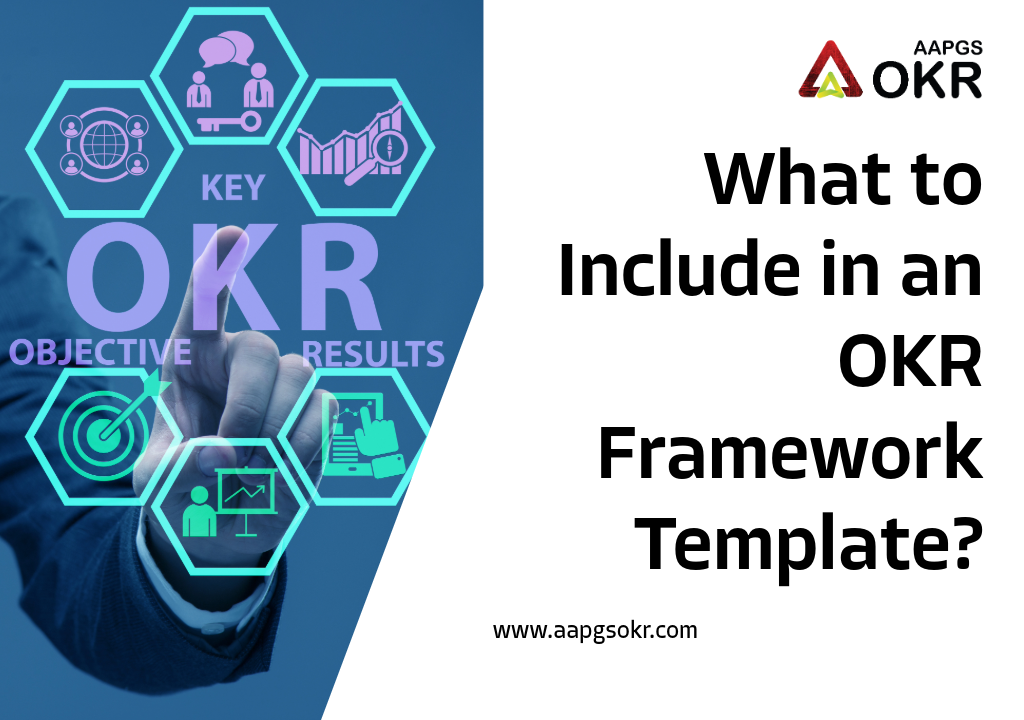Introduction :
Aligning team efforts with organizational goals is essential for success in the fast-paced business world of today. Setting quantifiable goals, monitoring advancement, and guaranteeing accountability among teams are all made easier with the help of an OKRResults framework template. Businesses can increase focus, productivity, and the efficiency of achieving strategic outcomes by incorporating the appropriate components into their OKR template, such as initiatives, progress indicators, and clear objectives and actionable key results. In order to make an OKR framework template effective and results-driven, this blog examines what should be included.
What is the OKR Framework Template?
An organized tool for setting and monitoring objectives and key results is an OKR Framework Template. It guarantees alignment between goals at the individual, team, and corporate levels by defining precise objectives, quantifiable results, action plans, and progress monitoring. Throughout the company, this template encourages accountability, focus, and quantifiable outcomes.
Welcome to the official AAPGS OKR blog :
Welcome to the official AAPGS OKR blog, your go-to source for insights on goal setting, performance tracking, and effective OKR strategies. Explore expert tips, practical guides, and real-world examples to help your teams stay aligned, focused, and achieve measurable results.
Essential Components Every OKR Template Must Have :
-
Objective statement section with clear formatting :
An objective statement defines a clear, actionable, and inspiring goal that a team or individual aims to achieve within a specific time frame. It should be qualitative, motivational, and aligned with the overall strategy of the organization.
-
Progress Tracking Mechanisms :
Progress tracking mechanisms help monitor the achievement of OKRs in real time. Common methods include dashboards, weekly check-ins, milestone reviews, and automated reporting tools. These mechanisms provide visibility into performance, highlight areas needing attention, and ensure teams stay aligned with objectives and deadlines.
Components of Strategic Alignment for Maximum Impact :
-
Objective connection points at the company level :
Objective connection points guarantee that individual or team OKRs are in line with corporate objectives. By demonstrating how each contribution advances the organization's strategic priorities, this alignment enhances focus, accountability, and overall business impact.
-
Structure for team and individual goals :
Team goals focus on collective outcomes that support company objectives, while individual goals break these into personal, measurable contributions. Clear alignment ensures accountability and drives overall business success.
-
Indicators of cross-functional dependency :
Common handoffs, overlapping timelines, shared deliverables, and collaborative decision-making are indicators. Finding these facilitates better teamwork and guarantees efficient execution.
Progress Monitoring and Measurement Tools :
-
What Should Be in an OKR Framework Template :
An effective OKR framework template should include clear objectives, measurable key results, action plans or initiatives, progress tracking mechanisms, and alignment with company goals. This structure ensures focus, accountability, and measurable outcomes across teams and individuals.
-
Visual progress indicators and dashboards :
Visual indicators and dashboards provide a clear, real-time view of OKR progress. They help teams track performance, identify bottlenecks, and make data-driven decisions efficiently.
Accountability and Ownership Framework :
-
Clearly defined sections for role assignment :
Defining roles clearly in an OKR framework ensures accountability and responsibility. Each team member knows their tasks, contributing effectively to achieving objectives and key results.
-
Decision-making authority definitions :
Clearly defining decision-making authority ensures team members know who can approve, escalate, or act on specific tasks. This reduces confusion, speeds up execution, and enhances accountability.
Importance :
An OKR framework template is essential for aligning organizational goals and tracking progress effectively. By implementing business OKRs through a structured approach, companies can ensure that every team and individual contributes to strategic objectives. Effective OKR implementation involves following OKR best practices, using tools like an OKR dashboard to monitor progress, and leveraging OKR planning tools for seamless goal-setting. Additionally, OKR initiative planning helps map out actionable steps to achieve key results, ensuring clarity, accountability, and measurable outcomes across the organization.
Conclusion :
An effective OKR framework template is more than just a tool for listing objectives and key results it is a strategic guide that ensures alignment, accountability, and measurable progress across the organization. To create a robust template, it is essential to include well-defined objectives that are ambitious yet achievable, providing teams with a clear sense of direction. Measurable key results act as tangible indicators of success, enabling teams to track progress and evaluate performance objectively.In addition to objectives and key results, initiatives or action plans should be incorporated to outline the steps needed to achieve each goal. Including progress tracking mechanisms, such as visual dashboards or performance indicators, ensures real-time visibility into OKR achievement, helping teams stay on course. Clearly defined role assignments clarify responsibilities and accountability, while alignment with company-level goals ensures that every individual and team contributes meaningfully to strategic priorities.

